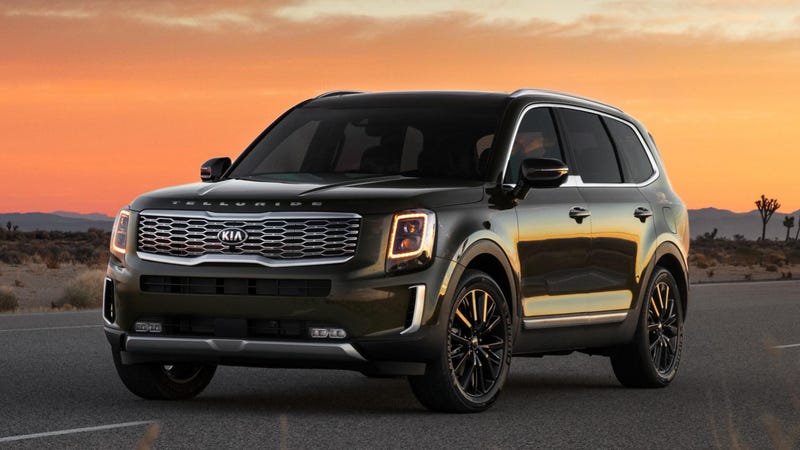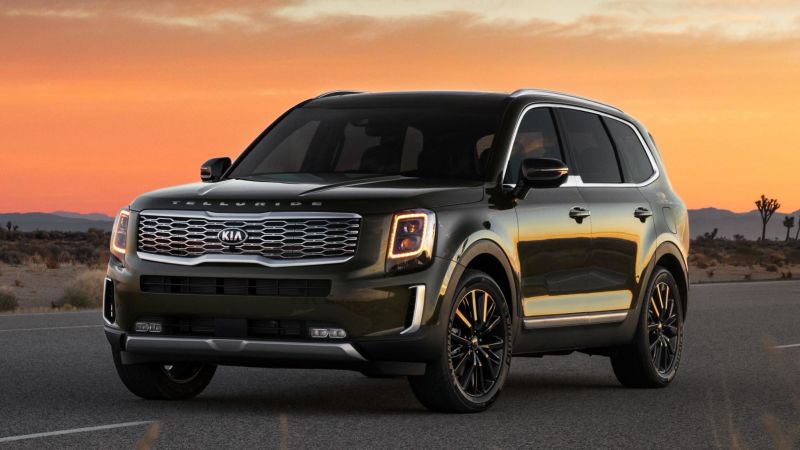
The SUVboom: Where and when might it end? Because it will end, and it probably has to end. A new report in The Wall Street Journal suggests that that end might be closer than we think.
The current market landscape is, basically, about what you’d expect, given what happened the last time we went through this. A little refresher: Around this time eleven years ago, GM pulled the plug on a new platform for the Yukon, Suburban, and Escalade. The SUV market was quickly fading, thanks to expensive gas and a recession that made SUVs unaffordable. And so GM found itself in the opposite position it finds itself today, trying to bail as fast as possible on SUVs.
From a New York Times story back then:
The executives killed the [Yukon, Suburban, and Escalade platform] project without a single dissenting vote. And with that, the era of the big S.U.V. was as good as dead, done in by soaring gasoline prices and consumers fleeing to smaller, more fuel-efficient cars.
“It would have been very difficult in today’s environment to spend a couple of billion dollars to do a replacement,” said Robert A. Lutz, G.M.’s vice chairman and head of product development. “Reality had set in.”
Advertisement
The era of of the big SUV was indeed as good as dead, at least then. The biggest victim was Hummer, of course, which shut down entirely, but, interestingly, none of the Big Three carmakers gave up on the segment entirely, or even partially, like we’re seeing these days with sedans. That’s probably because SUVs have always been a more profitable proposition vis-à-vis sedans, and so even if they weren’t selling as they used to back in the Great Recession, they still brought in money at low volumes.
Fast forward to today, and carmakers can’t stop making SUVs of all shapes and sizes: whole new models, in fact, like the (really big and really good) Kia Telluride I drove in March. What surprised me, via the WSJ, is how many new models are yet to come.
The number of crossover and sport-utility models on sale in the U.S. has steadily climbed this decade from 70 individual nameplates in model-year 2014 to 96 currently, according to a Bank of America report. By 2023, that figure is expected to rise to 149 models, the most ever for this category, the report found.
Advertisement
More than double the number of SUVs in less than ten years! That’s astounding, though perhaps not surprising for carmakers who only respond to a few real incentives, which are government regulations (well, most of the time) and, of course, profit numbers and share price.
The problem here is that the market is pretty much already full, which means that the market will have to splinter when all these SUVs do materialize. Not everyone wants an SUV, it turns out, and those who do, these days, probably already have one.
Industry executives don’t anticipate buyers will swing back to sedans en masse. But analysts say demand for crossovers and SUVs is topping out amid a broader slowdown in U.S. auto industry sales, and the market share for these models isn’t likely to grow too much beyond its current size.
“The piece of the pie is about set,” said Jeremy Acevedo, an analyst for Edmunds.com.
While sales of crossovers and SUVs rose 1.6% in the first half of 2019, the pace of growth has slowed considerably from the 13.2% increase recorded in the same year-over-year period last year, according to research firm LMC Automotive.
Advertisement
Somewhat hilariously, automakers say that, you know, despite the numbers, they got this all figured out (emphasis mine).
Already, crossovers and SUVs are taking longer for dealers to sell, with the average vehicle sitting on the new-vehicle lot for 71 days in May, up from 63 days last year and 51 days in 2015, according to data collected by Edmunds.com. That is compared with 79 days for sedans, a figure that hasn’t changed much over the last three years.
[…]
Auto executives say they aren’t too worried because even as the sales rate slows, there is still healthy demand among consumers for these types of vehicles and their models will continue to stand out.
“Our crystal ball has this continuing,” said Bill Fay, senior vice president for Toyota North America.
Advertisement
It must be reassuring for Toyota’s shareholders that the company relies on a metaphorical crystal ball to make product decisions, since they all saw it coming last time. But, snark aside, Toyota I think has been smart, like other Japanese automakers and the Europeans, in not abandoning sedans like Ford and Chevy have. The Japanese and European carmakers know that the American SUV boom won’t be for forever and, even if they don’t know, they’ve backed into the what’s looking more and more like the correct position regardless.













